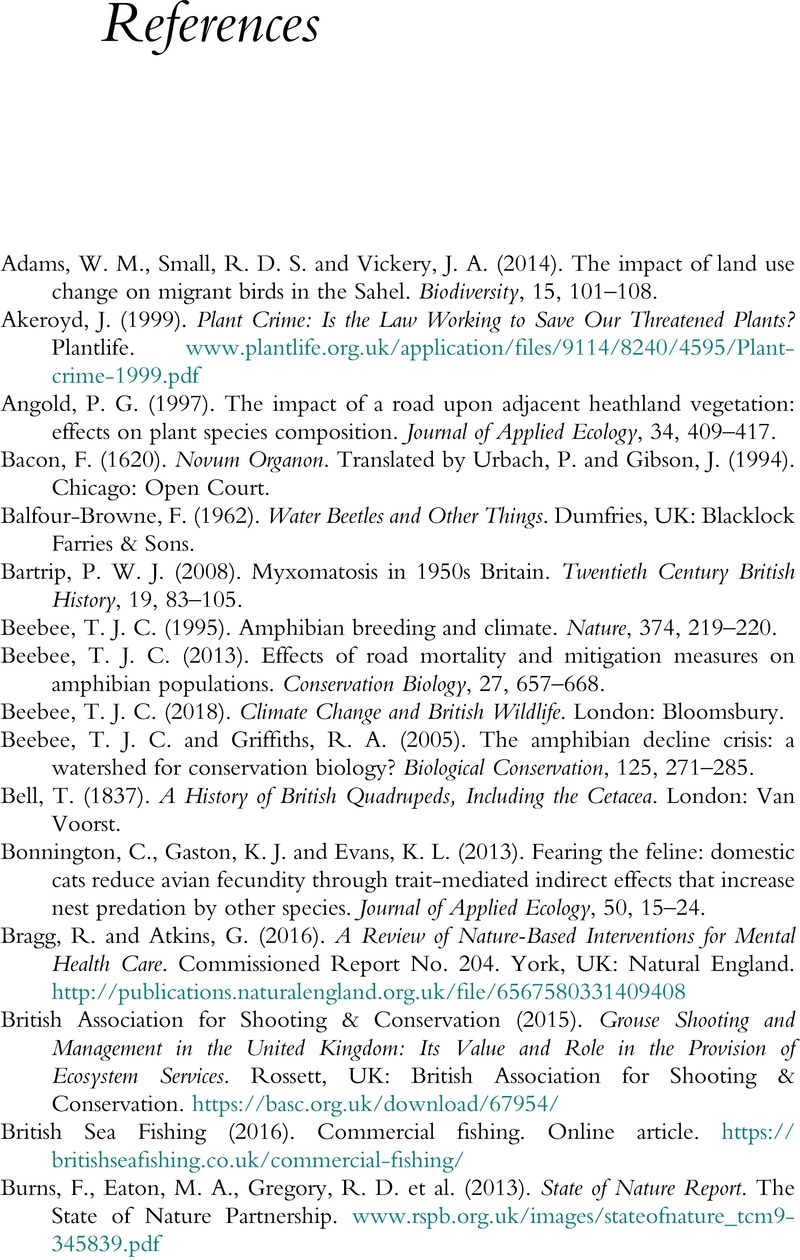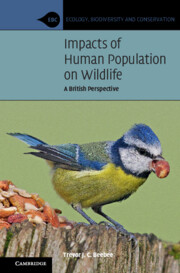Book contents
- Impacts of Human Population on Wildlife
- Ecology, Biodiversity and Conservation
- Impacts of Human Population on Wildlife
- Copyright page
- Dedication
- Contents
- Preface
- Acknowledgements
- Abbreviations
- 1 Population Matters
- 2 The State of British Wildlife
- 3 Human Activities Directly Killing Wildlife
- 4 Impacts of Development on Wildlife Declines
- 5 Impacts of Farming and Forestry on Wildlife Declines
- 6 Climate Change, Disease and Disturbance
- 7 The Human Population and Wildlife in Britain and Western Europe
- 8 Public Perceptions of Wildlife and Population Issues
- 9 International Aspects of Population Growth
- 10 Conservation in a Crowded Country
- References
- Index
- References
References
Published online by Cambridge University Press: 09 June 2022
- Impacts of Human Population on Wildlife
- Ecology, Biodiversity and Conservation
- Impacts of Human Population on Wildlife
- Copyright page
- Dedication
- Contents
- Preface
- Acknowledgements
- Abbreviations
- 1 Population Matters
- 2 The State of British Wildlife
- 3 Human Activities Directly Killing Wildlife
- 4 Impacts of Development on Wildlife Declines
- 5 Impacts of Farming and Forestry on Wildlife Declines
- 6 Climate Change, Disease and Disturbance
- 7 The Human Population and Wildlife in Britain and Western Europe
- 8 Public Perceptions of Wildlife and Population Issues
- 9 International Aspects of Population Growth
- 10 Conservation in a Crowded Country
- References
- Index
- References
Summary

- Type
- Chapter
- Information
- Impacts of Human Population on WildlifeA British Perspective, pp. 257 - 264Publisher: Cambridge University PressPrint publication year: 2022



